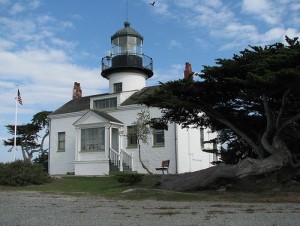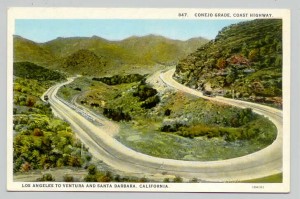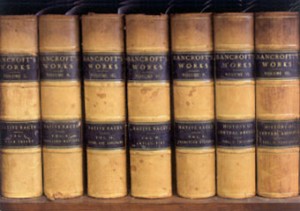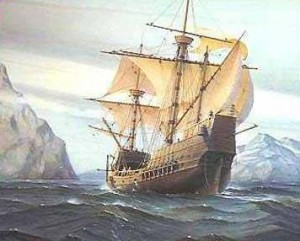
As we discussed last time, in 1769 Spanish explorers were charged with establishing a mission and presidio in both San Diego and Monterey. San Diego, apparently, was easy to find. Monterey . . . not so much. The explorers missed it entirely and stumbled onto San Francisco Bay instead. (Aside: The only other anchorage the Spanish knew of in California was Drake’s Bay, under the lee of Point Reyes. The Spanish had named that anchorage San Francisco. When they climbed up the San Bruno hills and saw the south bay, they thought it drained into San Francisco, that is, Drakes Bay. It took a while to sort the two San Franciscos out.)
That is to say, the explorers didn’t miss Monterey so much as they just failed to recognize it from the descriptions left by sailors. An exploration party led by Portola traveled on land from San Diego, went up the California coast to somewhere around San Simeon, crossed over to the Salinas Valley and followed that river to its source. From there, they identified Point Pinos, the most prominent landmark of Monterey, hiked around the point to Carmel and back, and determined that this could not possibly be Monterey. Bancroft gives a number of reasons how this could have come about. The two I like best are (1) the description of the bay as a great anchorage was inaccurately overstated, and (2) things look different from land and from the sea.
As to the first, anyone who has sailed north along the California coast can tell you that it is, in a word, rough. There are few anchorages to speak of between Point Conception and Point Sur, and those aren’t very secure. After beating around for a few weeks (or months, in the Spaniards’ case – lacking engines, ships would have to sail out to Hawaii and tack back toward California to beat the wind and current) trying to get up north, Monterey is nirvana. I’ve felt that way even with an engine and beating into the waves for just 20 hours or so. (The last time I did so, I was helping someone deliver a boat up to San Francisco. We docked in Monterey, ate breakfast, and the owner announced the delivery was over. He was renting a car and driving home to Sausalito the next day and he’d deal with the boat later.)
As to the second, things do look different from land and from water. I could go on about that, but the thought reminded me of a passage from Italo Calvino’s Invisible Cities. And he’s so much better at writing than I am.
CITIES & DESIRE 3
Despina can be reached in two ways: by ship or by camel. The city displays one face to the traveller arriving overland and a different one to him who arrives by sea.
When the camel-driver sees, at the horizon of the tableland, the pinnacles of the skyscrapers come into view, the radar antennae, the white and red windsocks flapping, the chimneys belching smoke, he thinks of a ship; he knows it is a city, but he thinks of it as a vessel that will take him away from the desert, a windjammer about to cast off, with the breeze already swelling the sails, not yet unfurled, or a steamboat with its boiler vibrating in the iron keel; and he thinks of all the ports, the foreign merchandise the cranes unload on the docks, the taverns where crews of different flags break bottles over one another’s heads, the lighted, ground-floor windows, each with a woman combing her hair.
In the coastline’s haze, the sailor discerns the form of a camel’s withers, an embroidered saddle with glittering fringe between two spotted humps, advancing and swaying; he knows it is a city, but he thinks of it as a camel from whose pack hang wine skins and bags of candied fruit, date wine, tobacco leaves, and already he sees himself at the head of a long caravan taking him away from the desert of the sea, towards oases of fresh water in the palm trees’ jagged shade, towards palaces of thick, whitewashed walls, tiled courts where girls are dancing barefoot, moving their arms, half-hidden by their veils, and half-revealed.
Each city receives its form from the desert it opposes; and so the camel-driver and the sailor see Despina, a border city between two deserts.
Italo Calvino
Invisible Cities
Text version here
Afterthought: The lighthouse, charts, and a GPS do make Point Pinos and Monterey easier to find these days.


